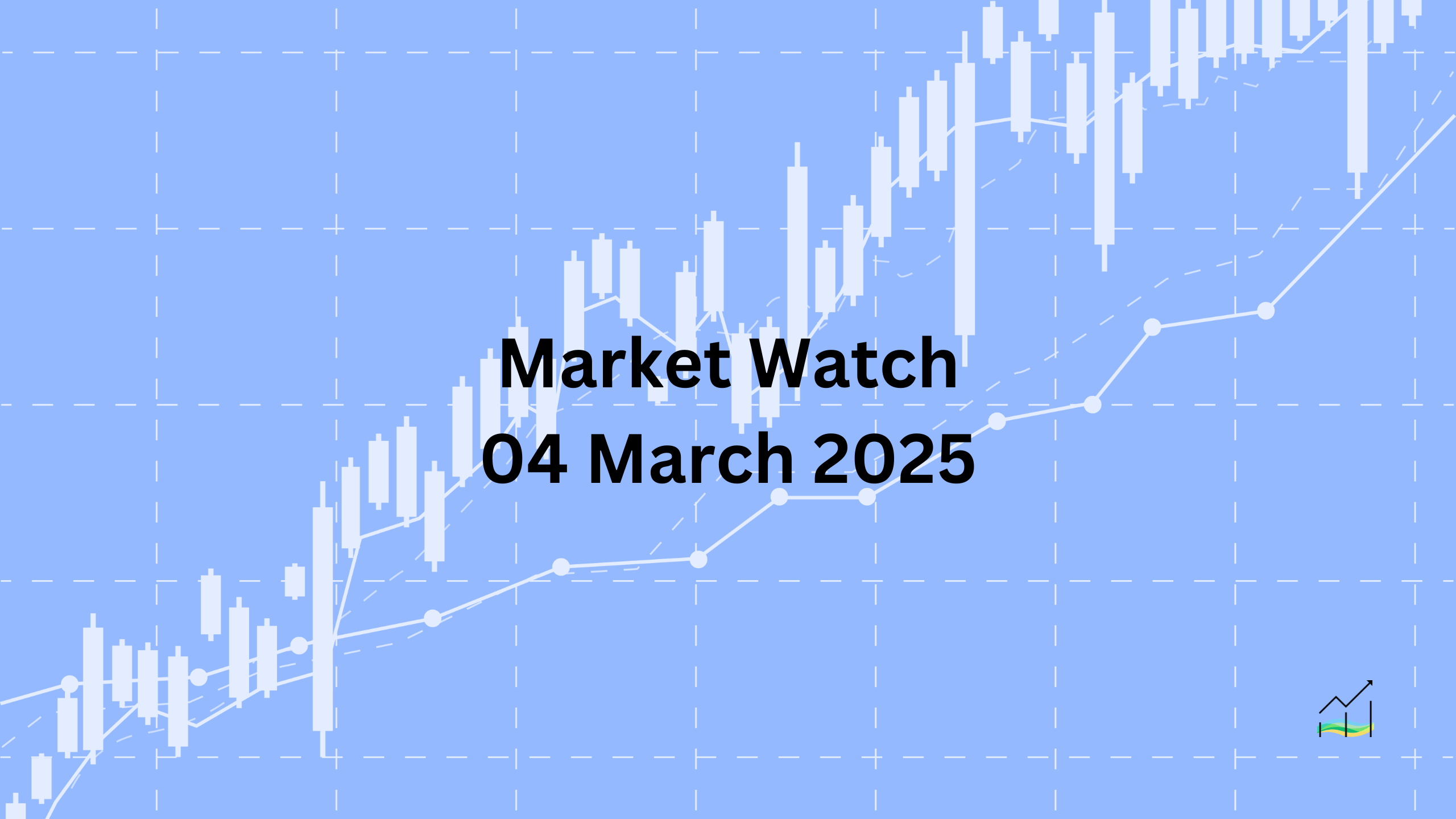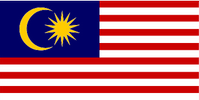04/03/2025 Market Watch

New U.S. Tariffs & Global Trade Tensions
The latest round of US tariffs on Canada and Mexico has taken effect, while China faces its second 10% tariff hike in two months. The US dollar is trading mixed, with the Swiss franc and Japanese yen leading among G10 currencies, up around 0.45%-0.60%. The Canadian dollar is also performing well, gaining about 0.35%. Canada and China have announced mild retaliatory measures, while Mexico is expected to respond later today. Meanwhile, the euro briefly tested its recent highs near $1.0530. Japan’s Prime Minister dismissed US accusations of currency market manipulation. Most emerging market currencies are stronger, though the Mexican peso remains under pressure, extending its losses from yesterday and weakening by around 0.8%.
Equity markets are reacting negatively to the tariffs. Nearly all major Asia-Pacific indices declined, while Europe’s Stoxx 600 is down more than 1%, potentially marking its biggest drop this year. US index futures are also trading lower. In the bond market, Japan’s 10-year government bond yield edged up to nearly 1.41% following weak demand at a bond auction. European benchmark yields have fallen by 2-3 basis points, while the UK’s 10-year Gilt yield dropped five basis points to 4.50%. US 10-year Treasury yields are slightly higher, nearing 4.17%.
Commodities are seeing notable moves. Gold, which suffered a 2.65% decline last week, is extending its recovery. After rising 1.2% yesterday, it is up another 0.75% today, trading near $2,915. Meanwhile, OPEC+ has confirmed its planned output increase for next month. Oil prices remain under pressure, with April WTI falling below $68, hitting fresh three-month lows after briefly trading above $70 yesterday.
United States of America
Overview
The US Dollar Index extended its decline after surrendering more than half of last week's late gains. It broke below key support near 106.50 and tested the 106.00-10 zone. With a light economic calendar, markets are focusing on the latest round of tariffs and the upcoming State of the Union address.
Economic Drivers
The US has implemented 25% tariffs on imports from Canada and Mexico, along with an additional 10% on Chinese goods. In response, Canada has imposed a 25% levy on approximately C$30 billion (~$20.6 billion) worth of US imports, with a second round planned in three weeks targeting C$125 billion of goods, including steel, aluminum, and automobiles. China has introduced a 15% tariff on select US agricultural products and placed restrictions on certain US defense companies. Mexico is expected to announce its response later today.
Data and Events
The key political event on the radar is the US President’s State of the Union address, scheduled for late today, which will take place during the Asia-Pacific trading session on Wednesday. Markets will be watching for any economic or policy signals that could influence sentiment.
Price Action
The Dollar Index broke below 106.50 and is now testing the 106.00-10 region. Market reaction to the latest trade developments and upcoming political events will be crucial in determining whether this downward momentum continues.
Key Points:
- The US Dollar Index has weakened, breaking key support at 106.50.
- The US has imposed new tariffs: 25% on Canada and Mexico, 10% on China.
- Canada retaliated with a 25% tariff on US imports, with a second round planned.
- China introduced 15% tariffs on US agriculture and banned select US defense firms.
- Mexico is expected to announce its response soon.
- The US President’s State of the Union address is a key event for market participants.
Australia
Overview
The Australian dollar rebounded yesterday after a six-day, 3.4% decline. It briefly traded above last week’s high near $0.6240 but has remained below $0.6230 today. Earlier, it dipped below $0.6190, hitting its lowest level since February 4, before recovering. Despite this short-term bounce, momentum indicators turned lower last week, signaling ongoing weakness.
Economic Drivers
Australia's current account deficit for Q4 came in at A$12.5 billion, slightly larger than expected, though the Q3 shortfall was revised lower. While the deficit has widened consistently over the past three years, it has had little direct impact on the exchange rate. Retail sales showed a modest 0.3% increase in January, recovering from a 0.1% decline in December.
Data and Events
Minutes from the Reserve Bank of Australia's (RBA) February meeting were released but did not provide significant new insights. Market expectations for an April rate cut remain low, with less than a 20% probability priced in. However, there is an 85% chance of a cut in May, with a full rate cut expected by July. Meanwhile, Australia must call a national election by May 17, adding to market uncertainty.
Price Action
The Australian dollar's recent decline saw the five-day moving average cross below the 20-day moving average late last week, reinforcing the bearish trend. While the currency has found some support after dipping below $0.6190, further downside risk remains if momentum continues to weaken.
Key Points:
- The Australian dollar rebounded after a six-day, 3.4% decline.
- It tested support below $0.6190 before recovering but remains under pressure.
- Australia's Q4 current account deficit was A$12.5 billion, slightly worse than expected.
- Retail sales rose 0.3% in January after falling 0.1% in December.
- The RBA minutes provided little new information, but rate cut expectations remain high.
- Markets see a low chance of an April cut but expect one by July.
- A national election must be called on or before May 17.
Canada
Overview
The US dollar extended its rally, posting a bullish outside up day as it traded on both sides of last Friday’s range and settled above its high. It briefly reached CAD1.4540, its strongest level since the February 3 spike when US tariffs on Canada appeared imminent. However, it has held below CAD1.4520 today, with early European trading seeing support near CAD1.4400.
Economic Drivers
The pending US tariffs have become a key factor influencing the Bank of Canada’s (BoC) policy outlook, outweighing recent high-frequency economic data. The market is now pricing in a higher probability of a BoC rate cut next week, with expectations rising to around 77%, up from 50% at the end of last week. Rate cut projections for 2025 remain at approximately 75 basis points.
Data and Events
This week’s economic calendar includes Canada’s services and composite PMI, January trade data, and the February employment report. However, these releases may have limited impact compared to developments around US trade policy.
Price Action
The US dollar’s rally saw it test CAD1.4540 before pulling back. Support near CAD1.4400 remains firm, suggesting that the bullish momentum could persist if tariff concerns continue to drive sentiment.
Key Points:
- The US dollar posted a bullish outside up day, reaching CAD1.4540 before pulling back.
- US tariffs are a key driver for the Bank of Canada’s policy outlook.
- Markets now see a 77% probability of a BoC rate cut next week, up from 50% last week.
- 2025 rate cut expectations remain at around 75 basis points.
- Key Canadian data this week includes PMI, trade figures, and the February jobs report.
China
Overview
The US dollar initially strengthened against the offshore Chinese yuan (CNH), reaching its highest level since February 13 near CNH7.3065. However, despite the US tariff announcement, the dollar has since pulled back and is now trading near a three-day low around CNH7.2700. A break below this level could see further downside toward CNH7.25.
Economic Drivers
The market reaction appears counterintuitive, with the dollar weakening broadly despite escalating trade tensions. The People's Bank of China (PBOC) set the dollar reference rate at CNY7.1739, slightly lower than the previous day's CNY7.1745. While US policy shifts create uncertainty for China, divisions between the US and its traditional allies may be shaping Beijing’s strategic response.
Data and Events
China’s National People's Congress session officially begins tomorrow. The meeting will be closely watched for any policy responses to the evolving trade landscape, as well as potential measures to support economic growth.
Price Action
After rallying to CNH7.3065, the dollar faced selling pressure, retreating toward CNH7.2700. If the decline continues, the next technical target is CNH7.25.
Key Points:
- The US dollar reached a multi-week high of CNH7.3065 before pulling back.
- Despite the tariff announcement, the dollar is trading near a three-day low against CNH.
- PBOC set the dollar reference rate at CNY7.1739, slightly lower than the previous day.
- China's National People's Congress session begins tomorrow, with key policy signals expected.
- A break below CNH7.2700 could see further downside toward CNH7.25.
Europe
Overview
The euro rebounded from its late-February low of around $1.0360, briefly surpassing $1.05 yesterday. However, it struggled to hold above $1.0525 and remains in a tight range today, trading between $1.0470 and $1.0525. Key resistance remains at the $1.0530-35 zone, where peaks were seen in January and February.
Economic Drivers
Shifting expectations around the Federal Reserve’s policy path have led to a narrowing US-German yield spread. The US two-year yield premium over Germany had fallen by over 25 basis points in recent weeks, dipping below 190 bps yesterday before rebounding. This yield movement influences euro sentiment, as rate differentials remain a key driver.
Data and Events
Eurostat confirmed that the Eurozone's unemployment rate remained steady at 6.2% in January, matching the record low since November. This stable labor market data adds to the broader economic picture but has had limited immediate impact on the euro’s movement.
Price Action
The euro's recovery met resistance near $1.0530-35, a level where previous rallies stalled. Momentum indicators suggest a potential rollover, and further upside may be limited unless a fresh catalyst emerges.
Key Points:
- The euro rebounded from its late-February low of ~$1.0360 but faces resistance around $1.0530-35.
- The US-German two-year yield spread fell below 190 bps before recovering.
- Eurozone unemployment remained at a record low of 6.2% in January.
- Momentum indicators suggest upside momentum may be fading.
- A break above $1.0535 is needed for further bullish momentum.
Japan
Overview
The dollar hit session highs near JPY151.30 yesterday during early North American trading but struggled to hold gains as US yields retreated. Resistance remains near JPY151.50, and the currency appears to be forming a rounded bottom. However, renewed selling pressure pushed it back down, retesting last week’s lows near JPY148.60.
Economic Drivers
Despite signs of bottoming, the dollar’s decline was driven by a sharp pullback in US yields. The 10-year Treasury yield dropped 12 basis points from session highs, exerting downward pressure on the dollar. At the same time, expectations for the Bank of Japan’s year-end target rate have shifted higher, with the swaps market now pricing in 85 bps compared to 72 bps at the end of last year.
Data and Events
Japan’s January jobs report showed stable employment conditions. The unemployment rate held at 2.5%, following a revision of the December figure from 2.4% to 2.5%. Meanwhile, the job-to-applicant ratio edged up slightly to 1.26 from 1.25. Prime Minister Ishiba also addressed US concerns over yen weakness, responding to accusations from President Trump that Japan’s currency policies were disadvantaging the US.
Price Action
The dollar initially gained momentum, testing resistance at JPY151.30, but the sharp drop in US yields led to a pullback. Follow-through selling today saw the pair retest last week’s lows near JPY148.60. Momentum indicators have turned higher, suggesting potential support, but further gains depend on US yield movements.
Key Points:
- The dollar tested JPY151.30 but faced resistance near JPY151.50.
- A sharp drop in US 10-year yields triggered a decline to JPY148.60.
- Japan’s unemployment rate remained steady at 2.5%, and the job-to-applicant ratio ticked up.
- Prime Minister Ishiba addressed concerns about yen weakness following Trump’s criticism.
- The market now expects the BOJ’s year-end rate to reach 85 bps, up from 72 bps previously.
United Kingdom
Overview
Sterling erased last Thursday and Friday’s losses with a strong rebound, climbing more than a cent and a third to reach a fresh high near $1.2725, its strongest level since mid-December. The currency remains firm and is approaching key resistance levels.
Economic Drivers
The British pound’s strength comes amid broader market movements rather than domestic economic catalysts, as there are no major UK-specific developments driving the rally.
Data and Events
This week’s UK economic calendar is relatively quiet, with the final PMI reading and new car registrations being the main releases. These reports are unlikely to significantly impact the currency’s trajectory.
Price Action
Sterling is approaching the 50% retracement level of its decline from last September’s high of around $1.3435 to the mid-January low of approximately $1.2100. This retracement is near $1.2765, with the 200-day moving average slightly higher at $1.2785. A break above these levels could reinforce the bullish momentum.
Key Points:
- Sterling rebounded strongly, reaching a new high near $1.2725.
- The UK economic calendar is light, with final PMI and car registrations in focus.
- The pound is approaching key resistance at $1.2765 and the 200-day moving average at $1.2785.
- A break above these levels could strengthen bullish momentum.
© 2025 SKONE Enterprise (003319453-V). All rights reserved.
The content on this site is for informational purposes only and does not constitute financial advice.


